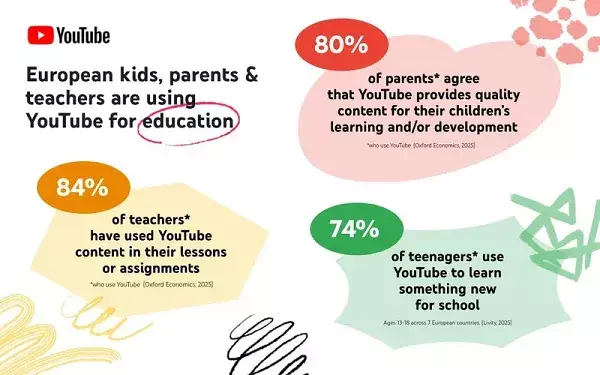In an era where digital experiences shape nearly every aspect of daily life, the perception of platforms like YouTube is fundamentally shifting. Traditionally viewed as a source of entertainment, YouTube is increasingly recognized for its educational potential, especially among young audiences. A recent comprehensive study highlights this transition, revealing that a significant majority of teenagers—over 70%—turn to YouTube not just to unwind, but to acquire knowledge for school assignments and personal curiosity. This data signals a pivotal change in how digital content is consumed and valued, prompting educators, parents, and policymakers to reconsider the platform’s role.
What makes YouTube uniquely positioned in this educational transformation is its vast, participatory landscape of content creators who produce tutorials, explainers, and in-depth analyses. Unlike static textbooks, YouTube offers interactive and engaging learning experiences that cater to a variety of learning styles. For many students, especially those in less privileged environments, such accessible resources can bridge gaps in formal education, democratizing knowledge and fostering self-directed learning. The platform’s vast reach and rich content ecosystem make it a potent tool for nurturing curiosity, problem-solving skills, and independent thought.
Challenging Conventional Educational Boundaries
The emergence of YouTube as an informal classroom disrupts traditional educational paradigms. Teachers across Europe report integrating YouTube videos into their lessons, citing higher engagement and improved understanding among students. Parents also express confidence in the quality of content their children access, viewing it as supplementary to or even a substitute for some instructional materials. These insights underscore an important shift—the recognition that learning can happen outside the walls of schools and the confines of textbooks, connected through the digital lifelines that platforms like YouTube provide.
However, this evolution invites complex questions about the quality, accuracy, and moderation of educational content. Not all videos are created equal, and misinformation can spread rapidly. Responsible curation and verification measures are essential to ensure that learners are benefiting from reliable sources. Furthermore, the platform’s success in fostering genuine learning experiences relies on collaborative efforts among educators, content creators, and parents to develop age-appropriate, pedagogically sound materials.
Implications for Regulation and the Future of Digital Education
As YouTube’s educational credibility gains momentum, it also faces increasing scrutiny from regulators concerned about minors’ exposure to digital media. Countries across Europe and Australia are contemplating restrictive laws limiting teen access to social platforms unless certain age thresholds are met. While these regulations aim to protect young users from potential harm, they risk undermining the educational opportunities that platforms like YouTube afford.
YouTube’s contentious battle to demonstrate its internal value becomes even more critical amid these debates. The platform advocates that its educational content warrants exemption from restrictions, emphasizing that it enhances learning rather than hindering it. But the challenge lies in convincing regulators that the benefits surpass the risks, especially given the exposure to inappropriate content and digital addiction concerns.
Moving forward, YouTube must evolve from being primarily a leisure destination to a recognized educational partner. This involves not only refining content moderation but also actively collaborating with educational authorities to develop endorsed curricula and verified learning materials. Such steps could forge a new regulatory landscape where digital platforms serve as complementary educational tools, rather than restrictive barriers.
Embracing the Potential of Digital Learning
The trajectory of YouTube’s growth as an educational resource is a testament to the enduring power of digital innovation. When harnessed responsibly, this platform can foster curiosity, empower learners beyond traditional boundaries, and complement formal education in meaningful ways. Its appeal lies in accessibility, diversity of content, and the capability to customize learning experiences.
The challenge—and opportunity—lies in redefining the narrative surrounding online education. Rather than fighting regulatory restrictions with appeals and protests, platforms like YouTube should embrace transparency, quality assurance, and proactive partnerships. Doing so not only secures their place in the future of education but also positions them as catalysts for a more inclusive, dynamic, and learner-centered digital age. The question remains: will they rise to meet this challenge and redefine the future of learning, or allow regulations to limit their influence?

